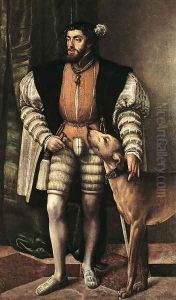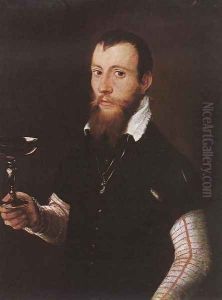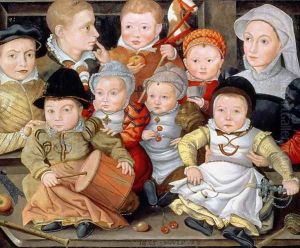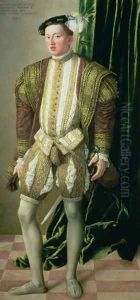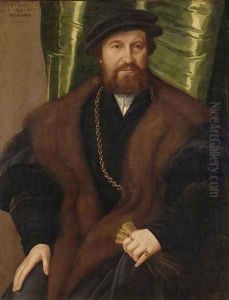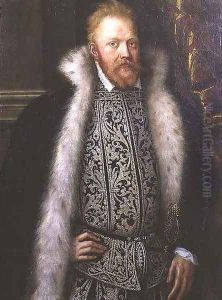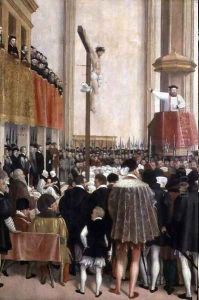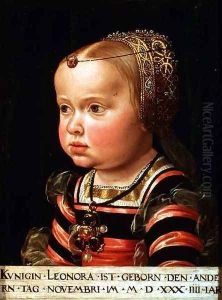Jacob Seisenegger Paintings
Jacob Seisenegger was an Austrian painter of the Renaissance period, born in 1505, known for his portraits of royalty and nobility. He was active during a transformative period in European art, where the styles and techniques of the Renaissance were being adopted and adapted north of the Alps.
Seisenegger's career is particularly noted for his relationship with the Habsburg court, which was one of the most powerful and influential royal houses in Europe at the time. He became a court painter to Emperor Ferdinand I, who was the brother of Holy Roman Emperor Charles V. This position afforded him significant prestige and allowed him to become one of the leading portraitists of his day.
His portraits are characterized by their detailed representation of the sitters' attire and the careful depiction of their status and identity. Seisenegger's work is often compared with that of his contemporaries, such as Hans Holbein the Younger, who was working at the court of Henry VIII in England around the same time.
One of Seisenegger's most famous works is the life-sized portrait of Emperor Charles V with his hunting dog, which exemplifies his skill in portraying the dignity and power of the imperial office. His portraits were not only likenesses but also served to convey the political and social significance of the individuals he painted.
Seisenegger's legacy lies in his contribution to the genre of portraiture and the spread of Renaissance ideas and aesthetics into the German-speaking lands. He died in 1567, leaving behind a body of work that continues to be studied and admired for its historical value and artistic merit. His paintings can be found in various art collections, museums, and galleries around the world, serving as important records of the faces and fashions of the 16th-century European courtly life.
